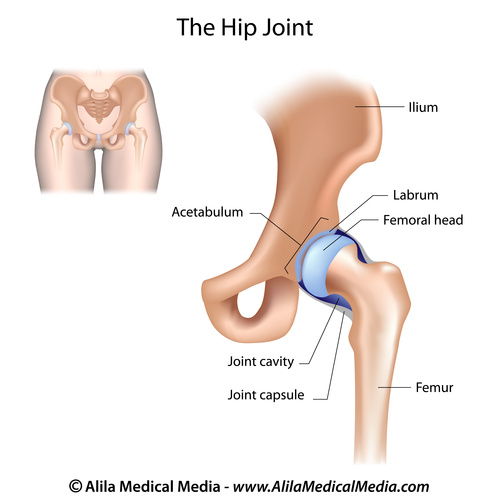Hip Pain
When you come to us with hip pain, we do everything we can to preserve your original hip. However, sometimes a total hip replacement is needed. We always strive for a minimally invasive approach that gets you back to your normal life as soon as possible.
Learn more about the anatomy of the hip, common conditions we see, and surgical approaches we take.
Learn more about the anatomy of the hip, common conditions we see, and surgical approaches we take.
Common Conditions
Osteoarthritis is a common condition that develops in many adults during or after middle age. Osteoarthritis of the hip causes pain and stiffness and can hinder the ability to complete everyday activities, from tying a shoe to getting up from a chair or taking a walk.
The condition develops as the cartilage in the hip joint gradually wears away, becoming rough and frayed while the protective joint space between the bones decreases. This can result in bone rubbing on bone. To make up for the lost cartilage, the damaged bones may start to grow outward and form bone spurs (osteophytes).
Osteonecrosis of the hip (avascular necrosis of the hip) is a painful condition that occurs when the blood supply to the bone is disrupted. It can ultimately lead to destruction of your hip joint.
Inflammatory arthritis occurs when the body's immune system becomes overactive and attacks healthy tissues. It can affect several joints throughout the body at the same time, as well as many organs, such as the skin, eyes, and heart.
There are three main types of inflammatory arthritis that most often cause symptoms in the hip joint: rheumatoid arthritis, ankylosing spondylitis, and systemic lupus erythematosus.
In babies and children with developmental dysplasia (dislocation) of the hip (DDH), the hip joint has not formed normally. The ball is loose in the socket and may be easy to dislocate. Although DDH is most often present at birth, it may also develop during the early years of childhood and create problems for patients in their 20's and 30's.
In all cases of DDH, the socket (acetabulum) is shallow, meaning that the ball of the thighbone (femur) cannot firmly fit into the socket. Sometimes, the ligaments that help to hold the joint in place are stretched.
In a normal hip, the head of the femur fits firmly inside the hip socket. In severe cases of DDH, the thigh bone is completely out of the hip socket (dislocated).
Surgical Approaches to Hip Pain

The hip, a "ball and socket" joint, is one of the largest joints in the body. The socket is the acetabulum—part of the large pelvis bone. The ball is the femoral head, or the top of the femur (thigh bone). The bone surfaces of the joint are covered by articular cartilage, which protects and cushions the bones to allow easy moment. The joint surface is then covered by an important lining: the joint capsule produces a small amount of fluid that lubricates and nourishes the joint.